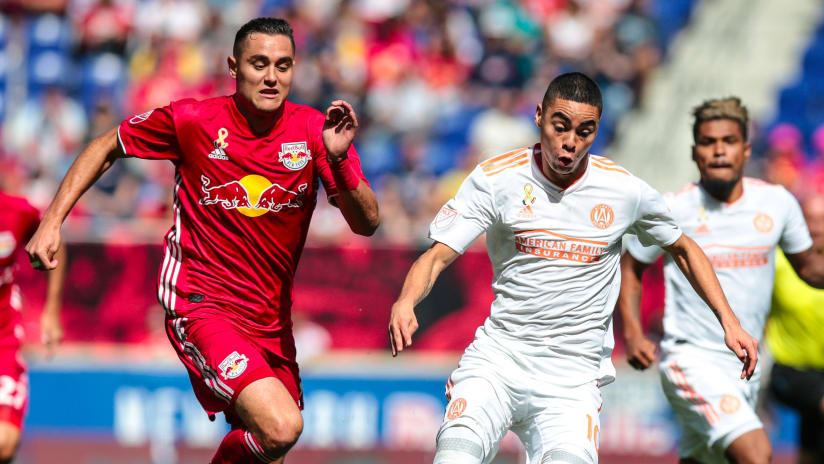In the MLS postseason, the final score might be a mystery, but the shape of the game takes on familiar patterns. When the game starts, it’s clear what each team is trying to do. Their actions are rehearsed and replicable.
Bad teams and games tend to be random. Without clear ideas or execution, anything can happen. Those games ... can be rough.
Good games present reason and logic; you can see why and how a team is winning or losing. And going into the Audi 2018 MLS Cup Playoffs Conference Championships, each finalist – the New York Red Bulls and Atlanta United in the East; Sporting KC and Portland out West – have developed a sense what they need to do, what they hope to accomplish and where that needs to happen.
Each team will likely have a zone they’re focused on, one the coaches will drill home – “If we dominate this area of the field, we like our chances” – and I'd bank on it being these four:
New York Red Bulls
The Red Bulls will have one of two tasks on their hands, depending on how Atlanta decide to play. Neither would be a surprise. Both take place in the same area of the field:
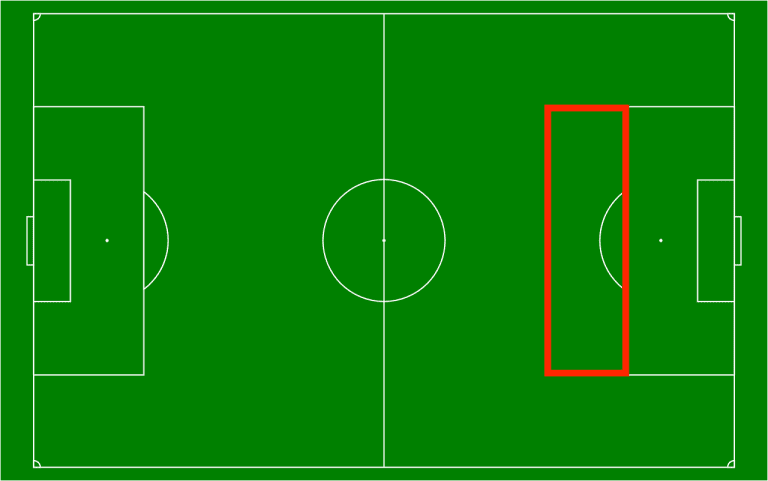
Whether the Red Bulls will get to destroy or be forced to create in that zone is the question.
This game will likely go one of two ways:
- Atlanta try to build from the back and attempt to control the ball, as they did in the Sept. 30 meeting between the teams.
In this case, the Red Bulls will need to press well. If they can swarm the ball within the first couple passes, they will suffocate Atlanta like they did in September. Given that 2-0 romp, they'd likely would prefer this rather than Door No. 2.
- Atlanta cede possession and aim to dominate space. They sit back, force the Red Bulls to pass through them, and look to catch RBNY on the counter … just like the Five Stripes did in routing NYCFC during the Conference Semifinals.
Atlanta only had 30 percent of the possession in the second leg against NYCFC, but cruised to a 3-1 win. Check out Brad Guzan’s pass map from that game:
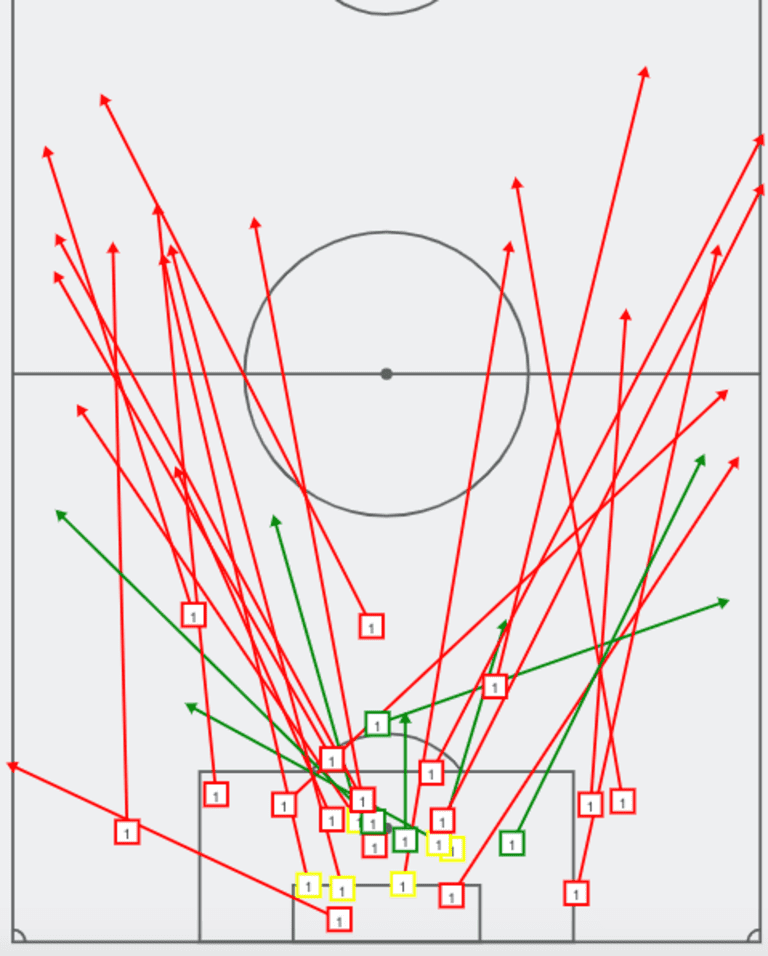
Yuck, huh? But it worked. Atlanta played a 5-3-2 defensively, often dropped their defenders all the way to the top of their box, and bypassed the midfield in possession.
If the Red Bulls can’t force turnovers in opportune spots, they will need to pass through Atlanta’s deep defensive lines. Unfortunately, they haven’t had much success with it this year. Think about the game against Montreal on Sept. 1, when the Impact won 3-0. When Montreal retreated toward their own 18, the Red Bulls couldn’t break them down. Sunday’s game could look similar. Assuming Atlanta continue their 2018 playoff tactic, will Red Bulls be able to create?
Atlanta United
Even accounting for the two possible game types outlined above, Atlanta, like the Red Bulls, will have the same key zones regardless.
In either outcome, we will see Atlanta’s two highest players isolated 1v1 with the Red Bulls’ center backs. If Atlanta tries to possess and Red Bulls press, everyone steps to a man and it leaves Aaron Long and Tim Parker 1v1 at midfield with Josef Martinez and his striker partner (unclear if that will be Miguel Almiron or Tito Villalba on Sunday). If Atlanta decide to play defensive and bypass the midfield, then Red Bulls will have a lot of the ball and push numbers forward, once again leaving Long and Parker 1-v-1 at the back.
Here is a photo from the September meeting. Straight up mano a mano, without cover and 60 yards of space behind them.
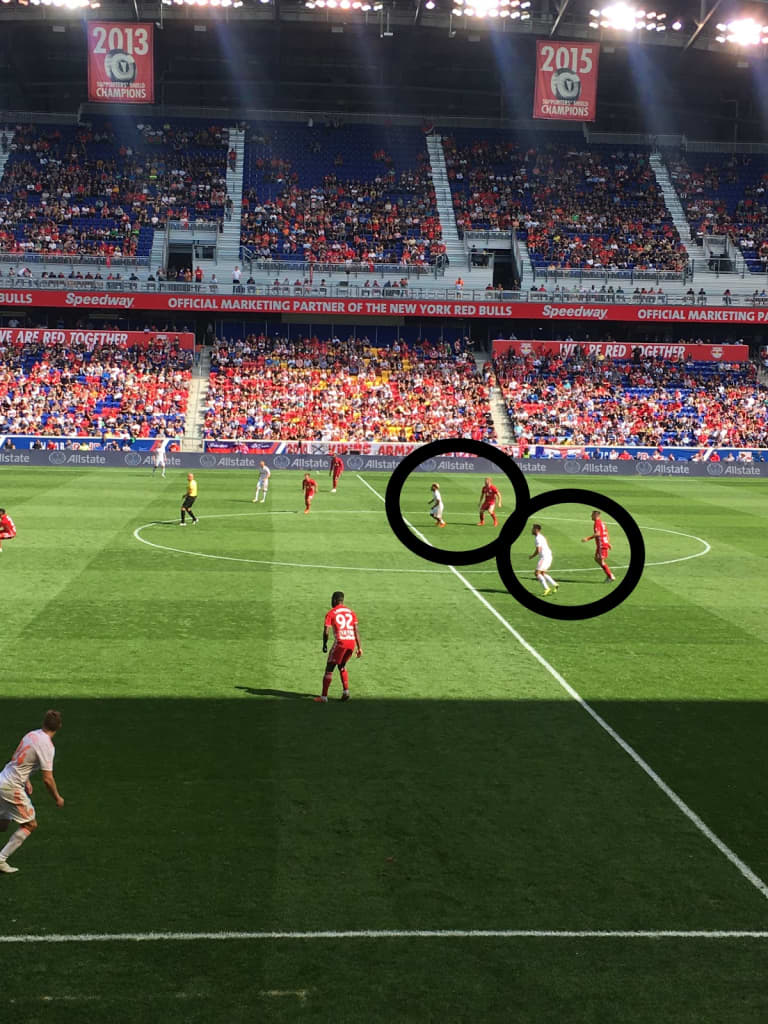
Given that, we could see a lot of individual duels here:
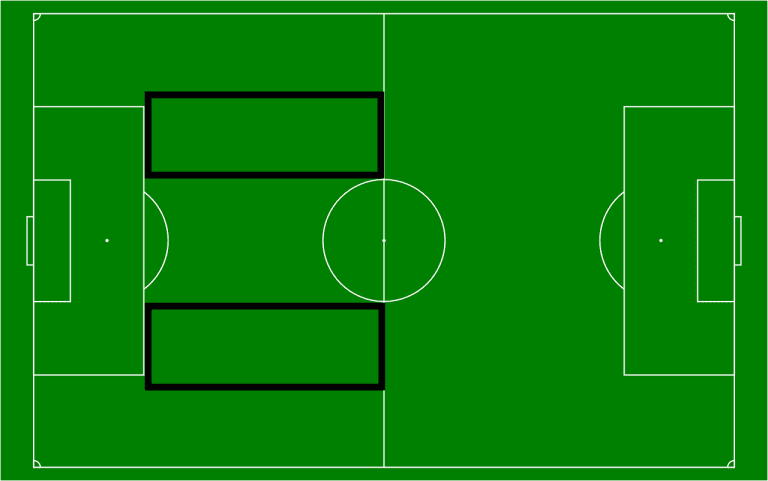
Atlanta will understand that their outlet is into that space and likely hit the ball a lot more than they did two months ago. If Martinez and Almiron/Villalba and get the better of Parker or Long, even just once, that could be the difference.
Portland Timbers
Portland have the most straightforward gameplan. It feels like we’ve been over this 1,000 times: Sit, force turnovers, score in transition. Rinse, wash, repeat.
Sporting might be the toughest team in the league to force into bad turnovers. They had the 2nd-highest pass-completion percentage during the regular season, and their midfield consists of veterans who understand what Portland is trying to do. They will know how much each touch matters.
Portland’s plan to unsettle SKC’s position will start right in the middle of the field.
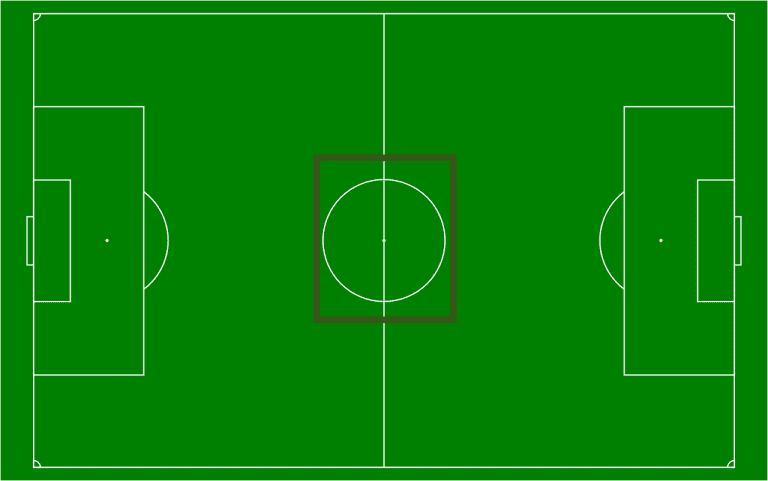
Ilie Sanchez, the single pivot in SKC’s 4-3-3, is the fulcrum of SKC’s attack. He gets the most touches and assumes responsibility for building the rhythm of the possession. In the first leg against Real Salt Lake, a 1-1 tie, RSL put Ilie on tilt. He rarely looked comfortable on the ball and made poor decisions. As a result, SKC looked as scattershot as they had in months. It created a clear plan: Put Ilie off his game and SKC struggle.
Portland will use attackers Diego Valeri and Jeremy Ebobisse to sit between SKC’s center backs and center mids and block off easy passes. In order for Ilie to get the ball, he will need to drop in front of Valeri and Ebobisse, as we see Gustav Svensson doing in the picture below. If Ilie does stay between the lines, he will generally get backpressured from Ebobisse and Valeri once he gets it. Frazzle Ilie, frazzle SKC.
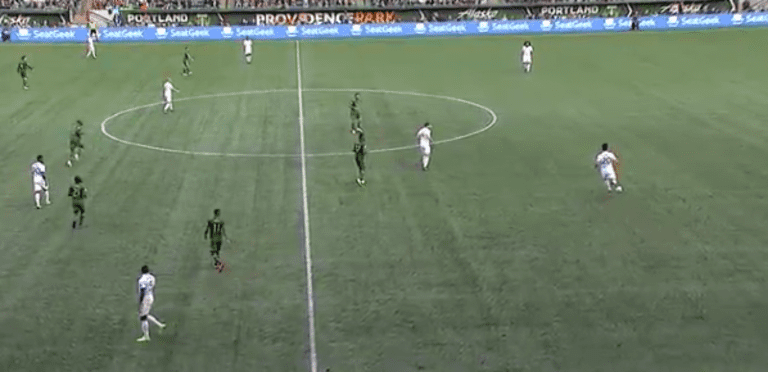
Timbers boss Gio Savarese will consistently be looking toward the center circle to check on Valeri and Ebobisse’s position and whether they seem to be making SKC uncomfortable.
Sporting Kansas City
SKC know, as well as you and I, what Portland will try to do. They realize the Timbers want to force turnovers in the middle of the field. Instead of going into the clogged center, SKC will look to create overloads wide.
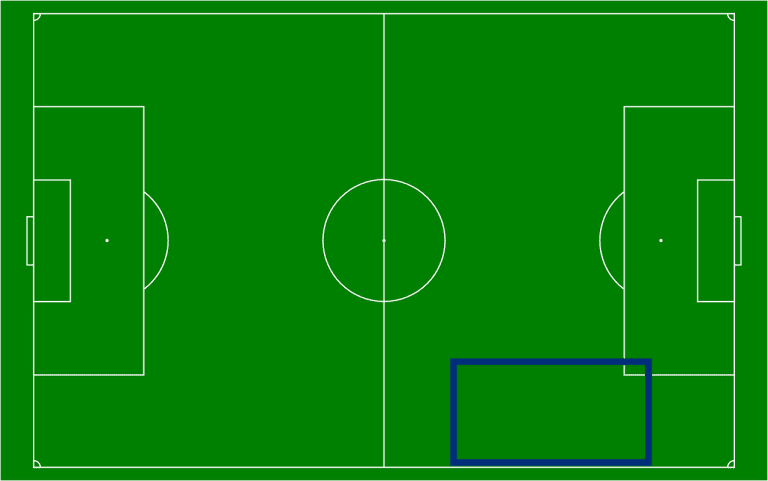
The first pass will go to right back Graham Zusi or Roger Espinoza – who likes to slide over from center mid – and then SKC will connect simple passes along the right side of the field. Espinoza, Zusi, and Johnny Russell form a fluid, interchanging triangle; if the opponent doesn’t send numbers, any of the three can move inside or go down the line at any moment. If the opponent slides over to match the overload, Zusi or Espinoza drive a long ball to the opposite side to exploit the space.
Expect Zusi to lead the game in touches and passes attempted. His ability to make the right decisions — and ensure the game is played wide instead of in the middle — could determine the outcome.

